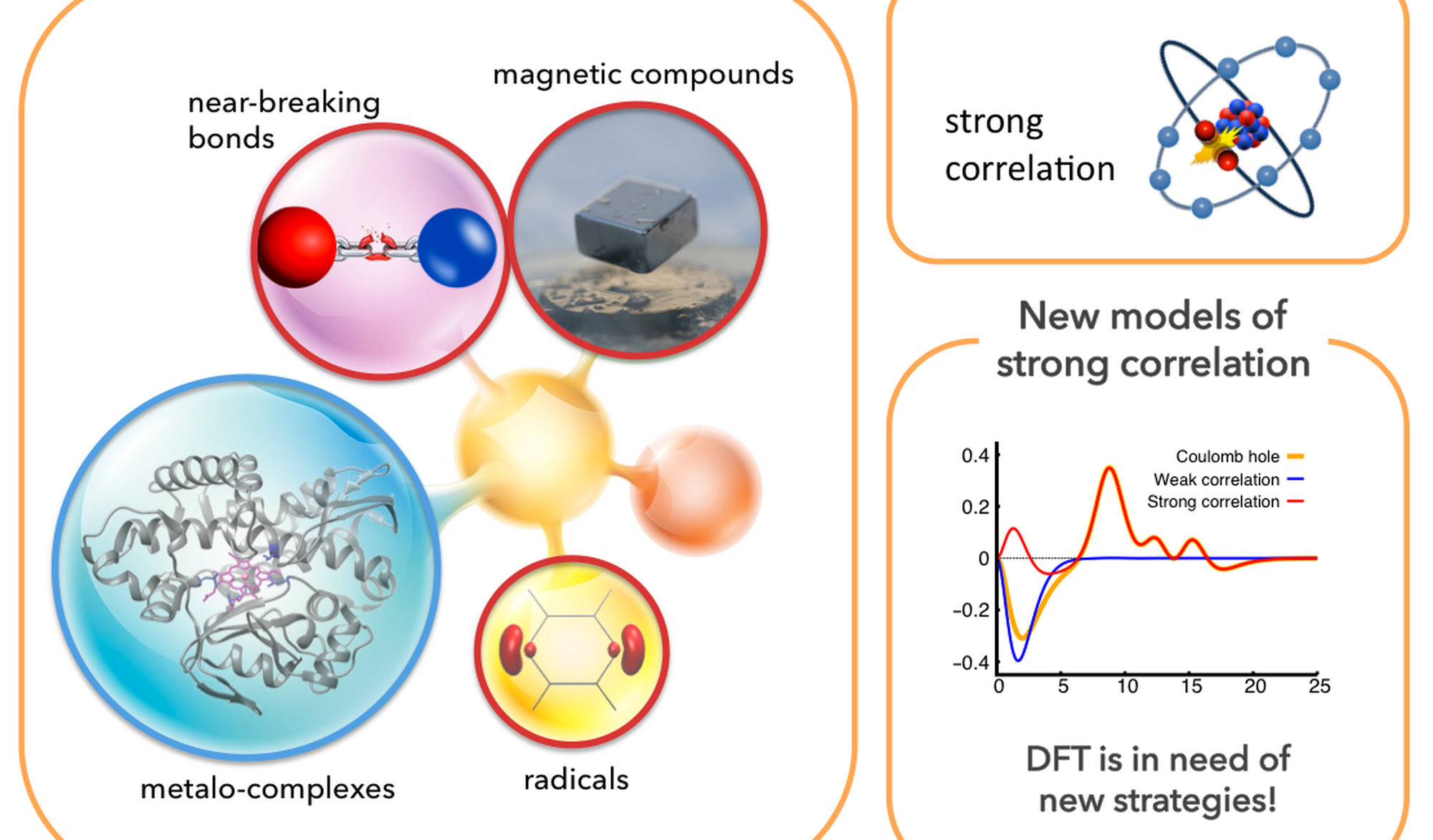A Real-space model of Strong correlation

Internship
Type of Project: Theory
Location: Donostia
Supervisors:
Eduard Matito
ematito@gmail.com
Eloy Ramos Cordoba
eloy.raco@gmail.com
Quantum mechanics provides the framework to treat molecular systems but its exact application for systems with more than two particles remains elusive. In practice, electronic structure simulations rely on approximate computational methods of variable accuracy. The main obstacle towards the accurate description of molecular systems is the so-called electron correlation. One of the most difficult problems in quantum mechanics is the account of strong correlation. Radical systems, bond activation, magnetic compounds, transition metal complexes, among others, suffer from strong correlation and their correct simulation is hampered by the lack of cost-efficient computational methods.
The cost of the electronic structure methods increases importantly with the system size. Among the computational methods available in the literature, density functional theory (DFT) is the one that provides a best comprise between accuracy and computational cost. Unfortunately, current density functional approximations (DFAs) fail to account for strong correlation and there are thus no cost-efficient methods to study large strongly correlated systems. In this sense, the inclusion of strong correlation in DFAs is one of the greatest present challenges in this field.
In this work, the candidate will explore new models of strong correlation designed in our group. These models will be used to retrieve the strong correlation part of the electron-electron interaction in the context of DFT. The models will be tested on the dissociation of diatomic molecules, radicals systems and transition metal complexes.
The candidate should have a basic knowledge on quantum mechanics (assumed in physics and chemistry BSc. students), and be eager to learn the basics of electronic structure theory and DFT.
